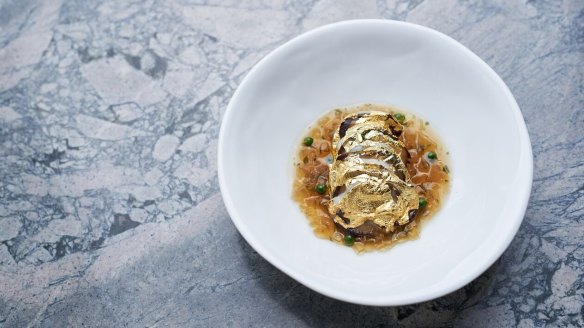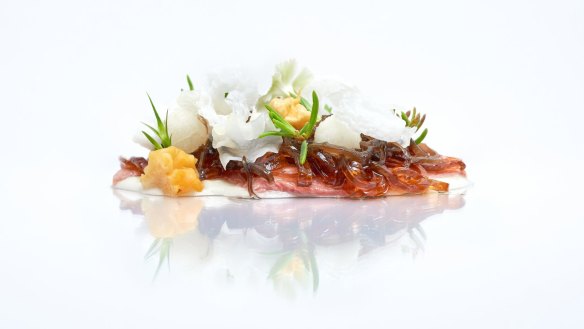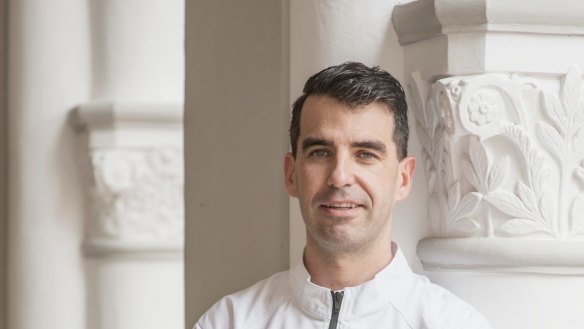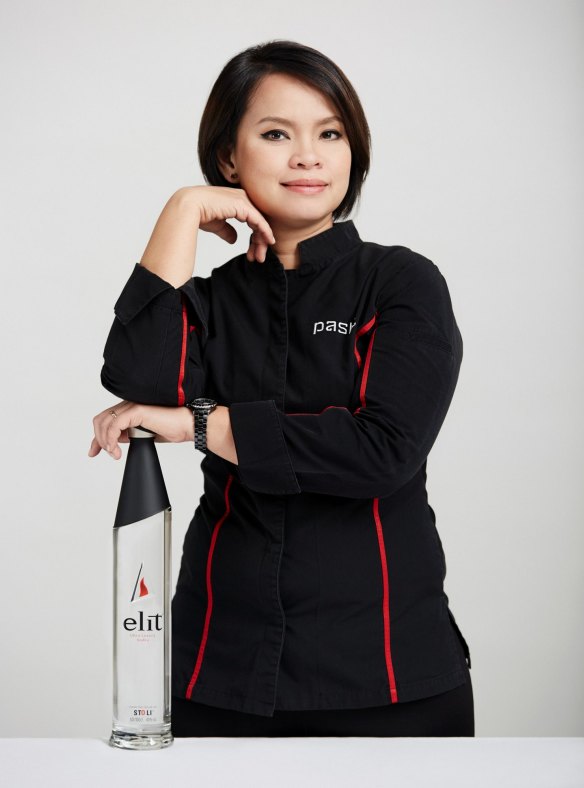Asia's 50 Best Restaurants Awards 2018: The changing face of Asian cuisine

You can rattle off a list of famous American, European chefs and British chefs without thinking twice, but how many top Asian chefs can you name? It's time we got to know our near neighbours a little better, if only because they cook so damn well. Luckily, the sixth annual Asia's 50 Best Restaurants awards provides a timely look at the current state of dining throughout Asia – one that shows a distinct changing of the guard.
The top spots, in fact, went to two of the region's most iconoclastic, playful disruptors.
Number one was taken out for the fourth time running (this is getting boring) by Gaggan Anand, of Bangkok's Indian-inspired Gaggan, in spite of the announcement late last year that he would be moving the restaurant to Fukuoka, Japan, in 2020. Anand himself is the furthest thing from boring, turning out a 25-course tasting menu built only from emojis, and a dish of goat brain curry that diners are instructed to lick from the plate.

Jumping from last year's No.11 to No.2 was Tokyo's Den, Zaiyu Hasegawa's playful and innovative Japanese. Den subverts the often formal Japanese dining experience into a more casual and contemporary package, with fun takes on Japanese garden salads and ''Dentucky'' fried chicken.
It's all a far cry from traditional high-end dining in Asia, historically dominated by the French. Originally installed in the grand hotels of Hong Kong, Tokyo and Singapore, the chefs, pastry chefs and sommeliers of France set the benchmark for fine dining in the region.
And while French technique is still the culinary currency in the new top 10, it now comes fused with local ingredients. Number three this year is the delicately French Florilege in Tokyo, four is the German/French Suhring in Bangkok, and five, the very-Frenchy Odette in Singapore. Number six is the French/Japanese Narisawa in Tokyo, followed by the contemporary French/Asian Amber in Hong Kong at number seven, and Shanghai's avant-garde, 10-seat, screamingly expensive Ultraviolet by Paul Pairet (with dishes such as Foie Gras Can't Quit) at number eight.
It's time we got to know our near neighbours a little better, if only because they cook so damn well.
Coming in at number nine is the more traditional Japanese kaiseki of Nihonryori RyuGin in Japan, while No.10 is David Thompson's Nahm, the slip from No.5 last year due to changes going on at his Michelin star restaurant in Bangkok. Executive head chef Prin Polsuk has left to open his own restaurant at the Bangkok Edition Hotel, and there is talk of relocation for the restaurant itself out of the Como Metropolitan Bangkok.
The awards – held over three days at the outrageously luxurious Wynn Palace, a casino resort hotel built by Vegas kingpin Steve Wynn for a cool $5.5 billion – highlighted new faces and places to watch, and not a few emerging trends.
Generational change

Two of the biggest stars of Asia's 50 Best highlighted the need for more established chefs to step aside and allow the next generation room to grow. 2017's number two placing, Andre Chiang, of Singapore's Restaurant Andre, stepped away from the podium this year, closing the restaurant on February 14.
"When a work of art is complete, an artist will sign it and walk away," says the chef, also a talented sculptor, who modestly refers to his restaurant as a world-class masterpiece. "Now I have a bigger mission, to think about the education of young chefs. We are the guardians of our next generation."
But Chiang, who is treated as something of a demi-god throughout Asia, dominated the stage anyway by winning the Diners Club Lifetime Achievement Award for 2018, an honour he said seemed to have come around ''too quickly''. After 30 years in the business, he plans to return to his homeland of Taiwan and his Taipei restaurant RAW ( #15) to learn more about his roots, and to reboot Restaurant Andre in Singapore as a more collaborative, educational venture.

Australians making their mark
Congrats to former Quay and Tetsuya's chef Sam Aisbett whose elegant Whitegrass restaurant in Singapore (the recent winner of a Michelin star) debuts on the list at number 50. "We're doing something a bit different, I think," he says. "I'm working with local Singaporean flavours and ingredients, at a fine dining level, and people just aren't used to that here."
While seasoned chefs David Thompson, of Bangkok's Nahm (#10), and Tetsuya Wakuda, of Singapore's Waku Ghin (#23), are regular members of this 50-strong club, Dave Pynt and Jake Kellie, of Singapore's Burnt Ends, rated an impressive No.12, and Sydney's Kai Ward made a dramatic leap from 43 to 18 with Mume in Taipei.

Go local or go home
It's exciting to see Asian chefs turn to their own histories, ingredients and cultures to inspire their cooking. The mantra on the baseball cap worn back-to-front by Dutch-born chef Eelke Plasmeijer, of Bali's Locavore, said it all – go local or go home. "It's what I believe in," he says. "It's logical. It just makes sense."
Plasmeijer and co-owner and chef Ray Adriansyah reject the fly-in, fly-out nature of imported produce in Bali, choosing to work with local growers and traditional Indonesian ingredients such as hibiscus flowers, abalone, duck and jicama on a highly seasonal basis. Even the plates, silverware and cocktail glasses are made in nearby artisanal workshops. "The only problem is consistency," he says, "but we're super small so we can change on a daily basis. It's easier to be creative when you have to find out what something tastes like, and what it works with."
But it was the trio of young chefs from Taipei's Mume who stole the show, coming in at number 18 on the list. Hong Kong's Richie Lin worked with Sydney chef Kai Ward at Quay in Sydney before heading off for the obligatory stage at Noma in Copenhagen, where he hooked up with US chef Long Xiong. Working together across south-east Asia, the three were blown away by Taiwan's unique culture and indigenous ingredients and realised a collective dream by opening Mume in Taipei. "It was out of our comfort zone," says Richie. "There was so much stuff we'd never seen before." Now 90 per cent of their produce is from Taiwan. "When people heard we were opening, they said 'What's it going to be? Italian or French?'" says Lin. "But why would we do that? We love taking what's around us and looking at it with different eyes."
More plants, less meat
In a timely move, Asia's 50 Best has teamed up with Britain's Sustainable Restaurant Association to create an award for the restaurant that best demonstrates the highest environmental and social responsibility. The inaugural award went to Shinobu Namae, of the two Michelin star restaurant L'Effervescence in Tokyo. A political science graduate, Namae increasingly works with the natural umami of local plants and fungi to give richness, as in his delicate flower of crisp potato petals with local caviar, and carrot churros with sea urchin. In June he plans to open a bakery in an effort to revive the wheat farms and flour millers of Japan. Then there's the completely vegetarian Fu He Hui (#30) in Shanghai, where Tony Lu focuses on China's amazing range of fungi – an immediate addition to the personal bucket list.
Countries to watch
Japan leads the way with a total of 11 entries in the top 50, while Thailand (home to the awards for the past two years) rose to nine entries, with Hong Kong at seven.
But how well does Asia's 50 Best list reflect reality? It's a clever, contemporary platform for those who want to play the game, and uses its power to push for affirmative action on female chefs and sustainability.
One highlight was the spotlight shone on Bee Satongun, of Bangkok's Paste Restaurant, winner of this year's Elit Vodka best female chef for her "80 per cent tradition, 20 per cent creative" Thai cuisine. The signs are there that Thai cuisine is reinventing itself from the ground up, with Thai people at the helm.
What seems absurd, however, considering the breadth and depth of the great restaurants of mainland China, is the paltry two restaurants that represent it. "More room for growth there," quipped May Chow, of Hong Kong's Little Bao. It highlights that these awards, like the World's 50 Best, are for a particular type and style of restaurant and not for all.
Restaurant reviews, news and the hottest openings served to your inbox.
Sign up